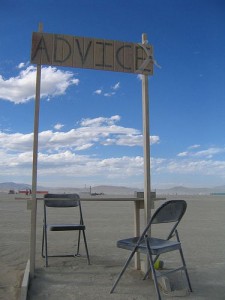“A ‘wow’ careers site is a lot more than a simple front end to an ATS application,” writes Dr. John Sullivan. “It is a mechanism to communicate and service a population of people that may someday work for your organization. Too many companies take the design of their careers sites too lightly, asking more about what it can do for them versus what it can do for candidates.”
Sullivan is one of the most influential commentators in the HR arena, especially through his articles on ere.net–and in 2007 he wrote an excellent, almost encyclopedic analysis of what goes into a “wow” Career site.
I happened to stumble across a portion of this material by luck, and after tracking down the other parts I assembled the whole into a document that is 22 pages long and contains not only a discussion filled with valuable insights, but also multiple lists that add up to “127 suggested features or capabilities for the corporate careers website of the future.” This is great material, and my goal is to make it more easily accessible.
But first, I have to explain why it wasn’t easy to access in the first place. As far as I can tell, the material originated in a series of four articles that appeared over three weeks in December of 2007. All four articles have the same title: “Your Corporate Website Is Boring Applicants.” None of them have sub-titles. Only one of them has a link to the preceding installment. The articles can be found on ere.net and also at Sullivan’s own website-but neither site compiles the articles or offers links between them. So, practically speaking, the only way to find them all is to search either site using the word “boring”! Plus–on ere.net, there are no numbers in the titles to indicate they are part of a series (or which part they are), while on Sullivan’s site, the numbering elements restart with every list instead of running continuously through the whole series.
The previous paragraph is almost a set of instructions for how not to make the most of a good thing. First of all, December is a month when most people don’t spend a lot of time reading online. And most won’t go back in January to see what they missed–so it’s arguably not the best time to publish “wow” material. Second . . . the title doesn’t even hint at the content, either of the series or of the individual articles.
Third, even readers who did tune in to the series when it was appearing in December of 2007 did not have an easy way to go back and review previous parts, or to put the whole thing together for reference. And that gap is even greater now that they have been archived. Finally, this ought-to-be-evergreen content is effectively withering away because it’s not even a bit search-engine-friendly.
Not that the articles haven’t been read by some. The statistics provided on Sullivan’s website show from 3,000 to 4,000 views for each. But that doesn’t tell how many unique readers there were (I had to access each unit five or six times in the process of doing my own compilation), and of course “view” can mean anything from “spent three seconds on the page accidentally” to “devoured every word with relish.” Plus, I think the material is much less useful if read in individual articles rather than as a continuous document.
The foregoing may offer an object lesson for best practice in content presentation. Successful blogs and websites that are designed to draw traffic depend heavily on the type of “pillar content” that lures searchers and is likely to be tweeted, bookmarked, etc. This material would certainly fit that model if it were properly packaged. For example: Lists make especially good pillar content-so just stitch these parts together, title it “127 Ideas for a Wow Careers Site,” and voila! Or add a serious, search-friendly title and feature it as a report. Or call it a white paper.
Those are just some approaches for turning random posts into high-value, persistent content. And worth keeping in mind for any Careers blog or website . . .
Meantime, see my next post for a big-picture view of Sullivan’s material and a set of links for easy navigation.
(Thanks to Laughlin Elkind for the photo of his beach-y advice stand.)
Cynthia Giles has followed a serpentine career path from academia to publishing to marketing and design to information technology and corporate communications. There’s plenty of detail about this journey at www.cynthiagiles.com, but briefly--the common theme has been ideas, and how to present them effectively. Along the way, she became an accidental expert on data warehousing and business intelligence, and for the past ten years she has combined corporate contracting with an independent consulting practice that focuses on marketing strategy for smaller businesses and non-profits.
Having spent quite a bit of time looking for work, and anywhere from two weeks to two years inside a wide variety of American companies—she has given much thought to what works (and what doesn’t) when it comes to creating a great employment fit.



Very good article and an area often not considered by blogs or companies.